THE year 2021 certainly provided sporting highlights galore for equestrian fans between the unprecedented occurrence of the Olympic Games and European championships in the same year.
From a sport horse breeding perspective, the Benelux, French and German studbooks provided gold medal winners at Tokyo, Avenches, Hagen and Riesenbeck, followed up by similar success stories at the World Breeding Federation for Sport Horse (WBFSH) young horse championships at Lanaken and Le Lion d’Angers.
The BWP (show jumping), KWPN (dressage) and Selle Français studbooks then deservedly topped the WBFSH rankings last month when the ISH studbook finished third in eventing.
Medallist details and Irish breeder stories were featured throughout the Olympic and championship season, told in some cases by the next generation such as Tom Brennan whose late mother Ita started the line that ultimately produced MHS Kilkenny (VDL Cardento).
Or the late Noel Hickey’s daughter Carol relaying his story about the British team gold medal horse at Tokyo and this year’s Kentucky five-star winner: Ballaghmor Class (Courage II).
Donegal’s Simon Scott finished the WBFSH year at the leading Irish show jumping breeder, thanks to the precociously brilliant Pacino Amiro (Pacino), the horse that also led the ISH studbook to 10th place in the WBFSH show jumping rankings, a notable improvement.
Self-professed ‘small breeders’ John Mulvey and the father and daughter team of Paddy and Maria Raggett bred the WBFSH top two ISH event horses: European individual silver medallist Brookfield Inocent (Inocent) and Grovine de Reve (Hermes de Reve).
And then there were the two bronze medals brought home from Le Lion d’Angers recently by Bonmahon Chelsea (Chellsini Z) and Cooley Snapchat (Kannan), bred by Richie Fitzgerald and Alan Wheeler.
So, definite high points.
However, European breeders continue to refine their well-marketed horses and with cycling rumoured to replace the show jumping phase of the modern pentathlon, equestrian sports are under constant pressure to keep their Olympic shop window.
Closer to home, the number of Irish-bred event horses at both the Olympics and European championships has dropped. Is there the realtime prospect of the ‘Irishness’ of the Irish Sport Horse being bred out? Or are breeders moving with real times?
Two individuals ideally placed to give their viewpoints on the 2021 championships, markets and challenges ahead for Irish breeding are Kylemore Stud’s Olive Broderick and the Traditional Irish Horse Association’s Chris Ryan. Not least because both are closely linked with hunting, another under pressure livelihood.
Hunting may seem far removed from the 1.60m and five-star worlds, yet the stars stand on the shoulders of giants. And grassroots breeders.
Milestone looming
It’s been an exceptional week for past and present stallions at Kylemore Stud that will celebrate a major milestone in 2022, 25 years after a young Galway couple Ivor and Olive Broderick returned home from gaining invaluable experience and contacts in The Netherlands to set it up.
Just last weekend at Pau five-star, two runners were by their Heartbreaker son Womanizer – second-placed CHF Cooliser (Breeder: Raymond Carroll) and Cooley Quicksilver (Alan O’Brien). Fourth-placed Scuderia 1918 A Good Friend is by Albaran that stood at Kylemore for one year, producing just 13 registered foals.
The German-bred was the highest-placed thoroughbred (19th) in last year’s WBFSH event sire rankings and has also produced The Quizmaster, Merel Blom’s Dutch-foaled Tokyo and Avenches horse.
Rounding off the Pau sires is VDL Arkansas, first brought to Ireland by Marily Power and Susie Lanigan-O’Keeffe to Suma Stud, where Olive also served her apprenticeship. When standing with Richard and Heather Wright at Ardmulchan Stud, he produced Off The Record (Peter G. Brady), one of the top-six ISH event horses in the WBFSH rankings this year.
Later based at Kylemore, his SRS Kan Do (Michael Dooner) is the fourth of the Kylemore-linked five-star horses at Pau, where he placed 11th.
“Womanizer and Watermill Swatch were bought on the same day,” Olive remarked about two of their resident stallions. “I hope it’s an endorsement of the stallion choice that we made and matching the mares,” she added, about the Pau pair produced by Womanizer, ranked equal 28th with Courage II in last year’s WBFSH event horse sires.
“And I see lovely ones by him in the [Monart] sales this week.”
Breeding business
It takes time and patience to build a business.
“We try to have a top-class facility, top-class stallions, staff and service, that’s what we try to do. I feel that since we started here, we’ve [Irish breeders] got more professional and I’d like to take a small bit of credit for being part of it. And all the stallions owners and studs that have risen up to the challenge of the modern world of breeding.
“It’s not been easy, we’ve had to spend a lot of money on stallions and facilities. We do charge for it but we do work very hard and it’s a tough business and let nobody tell you it’s not!”
Breeders have also upped their game. “When you walk down through the fields or mare barns in the middle of the stud season, one after the other is a decent mare. I see such a huge improvement, without exception, across the board. Breeders are becoming much more discerning and have risen to the challenge of the modern market.”
As well as standing stallions, the Brodericks are agents for international stallions. These include a choice of stallions at VDL Stud, where they worked, including Baltic VDL, sire of Olympic show jumping silver medallist Leone Jei and the popular Zirocco Blue.
His Irish-born stock include CSF Willow, the filly foal that set a recent Goresbridge record for breeder Patrick Connolly when sold for €35,000.
“We try to be knowledgeable about how we match the stallion and mare, we can give genuine advice. We’re not buying off a brochure.
“Ivor is out there [in Europe] he’s looking at all the stallion selections, the young horses, the foal auctions abroad. He really has his finger on the pulse of what’s coming through and that knowledge is better than buying off a brochure.
“I’m very proud to serve Irish breeders and to be a part of their success in any small way. We’ll always strive to help breeders make the best choice through informed decision making.
"‘Brochure breeding’ is not where I’d like to see us going. Conformation is really important to us too, no sound horse means no horse.
“Of course new methods and systems of breeding are to be welcomed. As long as we don’t lose sight of the bigger picture, what made us Irish famous all over the world, our knowledge and eye for a horse and understanding of what it takes to produce the best.”
Next generation
Continental breeders are constantly working on improving their stock too. What are her thoughts on the modern warmblood?
“They have really worked on rideability and trainability, in choosing breeding stock with good temperaments. They’re now very intelligent horses, compared to some warmbloods of 25 years ago. They’re more athletic and they win over riders because they’re easier to ride.”
Olive has also noticed how that demand for well-produced young horses filters down to the next generation of highly trained riders. “It has become so professional and there’s a lot of money going into training. When those pony riders go on to horses, they won’t really be looking for a happy hacker!”
Amongst her concerns in sport horse breeding trends are genetic diversity and the loss of real horse knowledge.
“I worry a lot about genetic diversity. I really do. I think that’s we’re really going down that road, not here maybe but on the continent where there’s multiple, multiple embryos with the same breeding. And it is a concern. Of course they’re from the best families, Chacco-Blue, etc.”
While she understands the commercial aspect behind multiple embryo sales and breeders fast-tracking their business by buying readymade continental broodmares, she sounds a note of caution.
“I certainly don’t want to see breeding becoming the preserve of the very wealthy. I am worried too that we are losing horsemanship and great judges. And I do feel that unless you put people in front of us to be educators, people that have bred international horses, that knowledge base will be lost.
“Now, there’s nothing wrong with investing [in a readymade family]. It’s such a long road with horse breeding and so expensive that of course you can see why some breeders do. Most people don’t have a big farm, they’re working and they need horse breeding to be a profitable enterprise. So they do take the shortcut to buy the family. It’s just very, hard to get into those top, top lines. You would never sell your best broodmare.
“You also need the education from the people who were able to produce those families over 30 years and what it takes. There’s no fellow on Facebook, or anywhere else that’s able to tell you that in five minutes, it takes a lifetime to learn. I think that’s where focusing just on a page is a waste of time.”
Global Champions Tour and five-star horses are described by her as ‘machines’.
“That’s not saying we shouldn’t try to breed a horse like that, we should always try to breed the best. For championship horses, many are out of top, top families with depth of pedigree,” adding “You never know you have a championship horse until you’re in the championship.”
Sport and horse breeding follow the money, whether its riders bypassing traditional shows to compete on the lucrative Global Champions Tour or breeders choosing the most commercial stallions to sell their foals.
Soul searching
Which brings us to traditional breeding. Their Watermill Swatch and Huntingfield Rebel were once the busiest thoroughbred and Irish Draught stallions but that trade has dropped off. The Brodericks also stand the Watermill Swatch thoroughbred son KMS Timeless, opting for the long road by producing him as an eventer with local rider Paul Lynch.
“People talk about the thoroughbred but they won’t use them and they won’t buy them the TB-sired foal or if they do, they want them for peanuts. So many times I have to be honest with breeders when choosing a stallion and tell them that their foal will be easier to sell and make more money if it’s by a warmblood stallion, even though I know that a thoroughbred would be a super cross for the long-term plan.
“So that’s the answer. We can all do things for the love of it but at the end of the day, we have to buy the hay, we have to buy the feed, we have to pay staff. All the love in the world for the Irish horse doesn’t do that and that’s the long and short of it. Unless there’s a driven policy of support for the Irish horse, they will disappear. There’s no question about that. I really feel that.
“Certainly the Connemaras won’t disappear, there will always be families and children looking for ponies. I was at Milchem [Equestrian Centre] last Sunday and the amount of new kids competing is fantastic.
“Certainly the Draughts won’t, not in the short term. I don’t know how many young enthusiastic Draught breeders you have under the age of 30 but would hope they’re there.
“We’re losing ground [against other studbooks] because our traditional horse is a slow burner. We have a large percentage of breeders that sell their foal but thankfully many breeders of traditional horses understand the long road and have developed their systems to hold onto the foals if they can’t sell.
“You can have a thoroughbred stallion out there eventing, you can have the best pedigree in the world and they won’t use them. And that’s not a criticism of the breeders, but how long can a stud like us continue to keep a thoroughbred stallion in a stable, market and promote him when if you put a young, unapproved, non-X-rayed, unvetted warmblood in there, he can cover 50 mares at twice the fee?”
With many Irish Sport Horse pedigrees now including two and often three crosses of continental breeding, there is a real risk of breeding out the ‘Irish’ factor. Both Shalies Pet and Erkina Jane, the respective traditionally bred dams of Brookfield Inocent (1994) and Grovine de Reve (1997) were foaled back in the 1990s, the decade when Irish Sport Horse breeding changed but without setting in place a real plan for retaining some degree of traditional bloodlines.
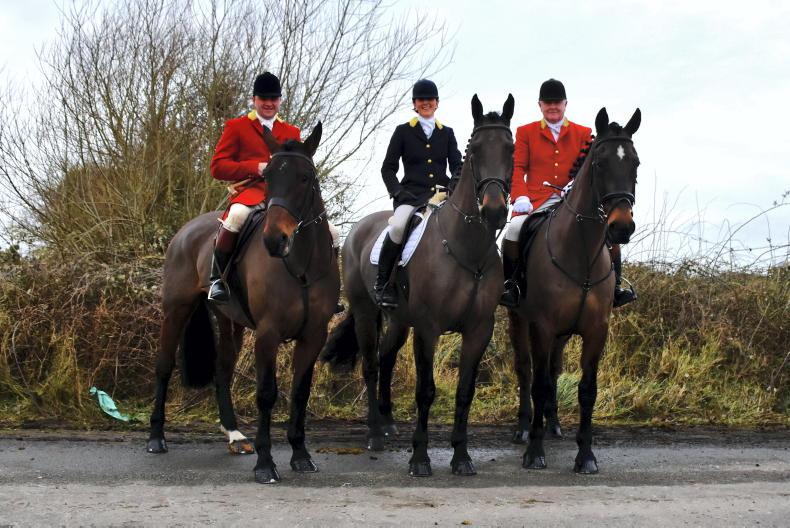
She doesn’t subscribe to the belief that our best mares were sold abroad in previous decades, saying she’s only come across two Cruising mares in the backbreeding of countless continental pedigrees viewed. “I never believed that, I think it was more a case that we never really realised what we had!
“We’re back to Square one if we don’t have the mares,” added Olive, one of the East Galway Hunt joint-masters. Naturally, another major concern for is the insurance issue crisis facing hunt committees.
“The biggest threat to the traditional horse is hunting. If hunting goes, it brings down point-to-pointing too. For one who likes the traditional horse and at the moment where hunting is, it just feels like are we just going to lose our whole soul? And it looks like we are.”
The tide may appear to be out but that can change. After close to 25 years in business, the Brodericks are proud to be part of many success stories.
“When the boat is rising, try and bring everybody with you.”
What is an Irish horse?
“If someone says to me he’s full Irish, I take that as a horse with no continental breeding. But nowadays an Irish horse is anything born here. Sure, we considered Cavalier Royale as Irish way back when! I think we cannot afford to be ‘racist’ when it comes to performance pedigree. A good Irish horse is any one that was born here regardless, and our breeders are doing a brilliant job upping the standard year on year… a “true” Irish horse is of course a Traditional, as the definition goes.” Olive Broderick
Next week: TIHA’s Chris Ryan
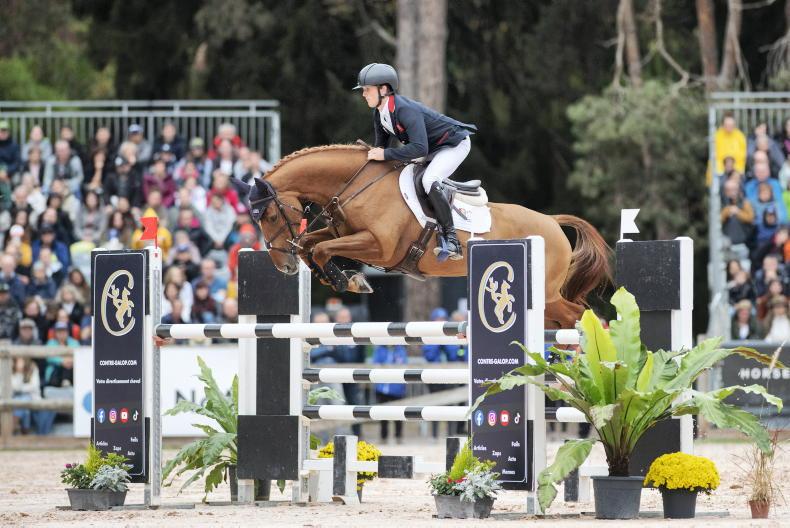

 This is a subscriber-only article
This is a subscriber-only article
 It looks like you're browsing in private mode
It looks like you're browsing in private mode
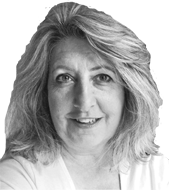







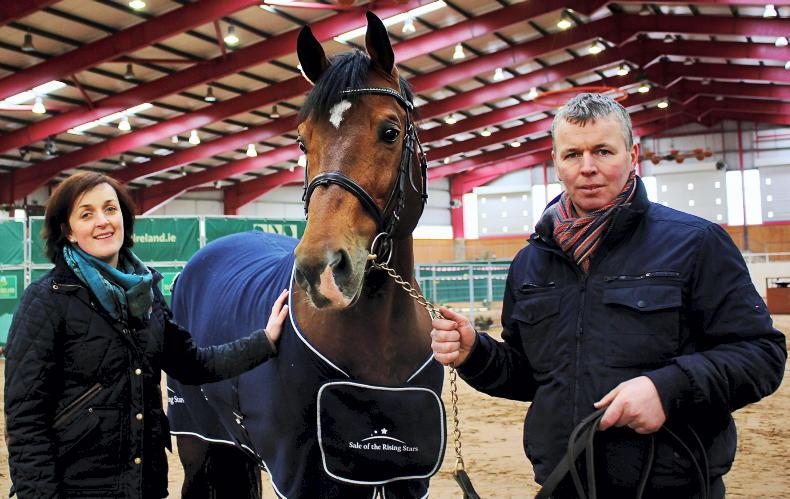
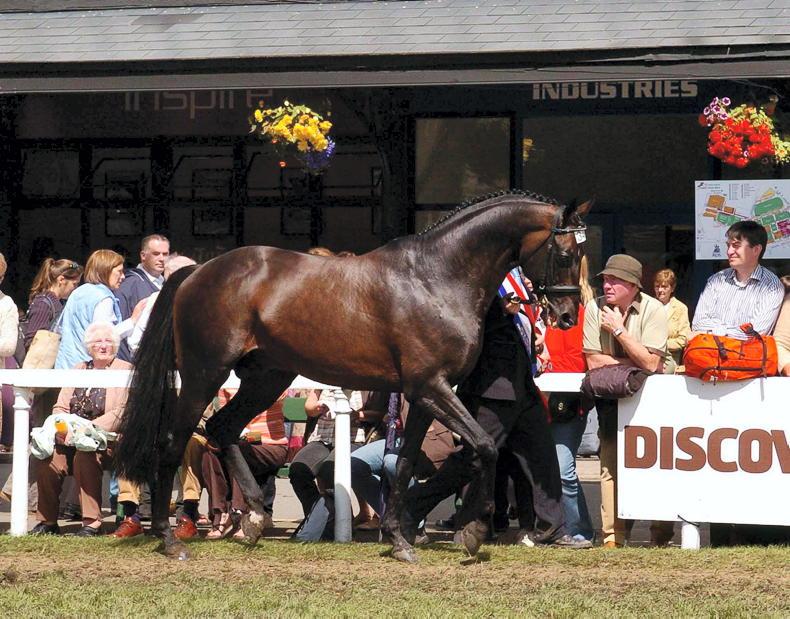
SHARING OPTIONS: